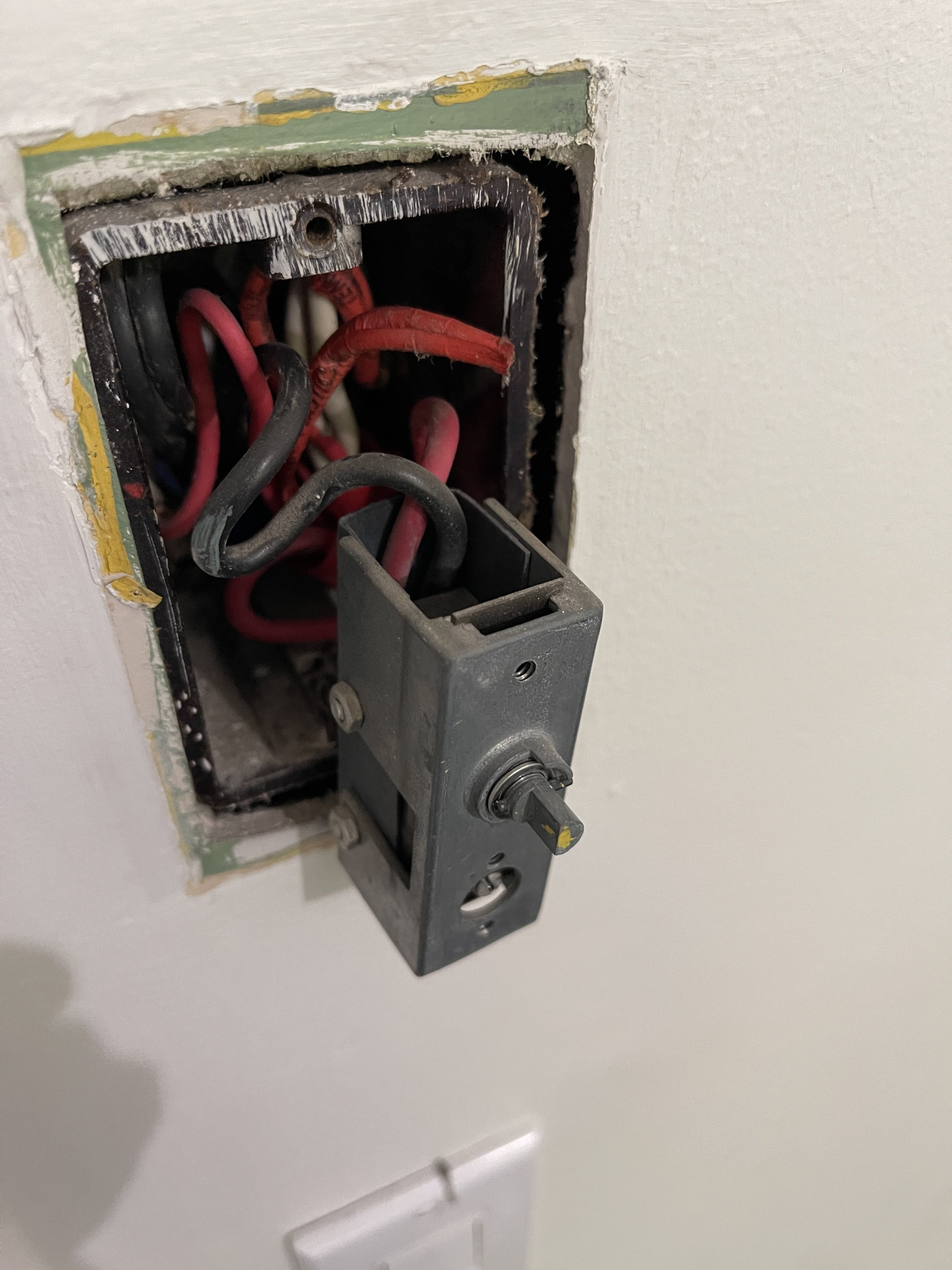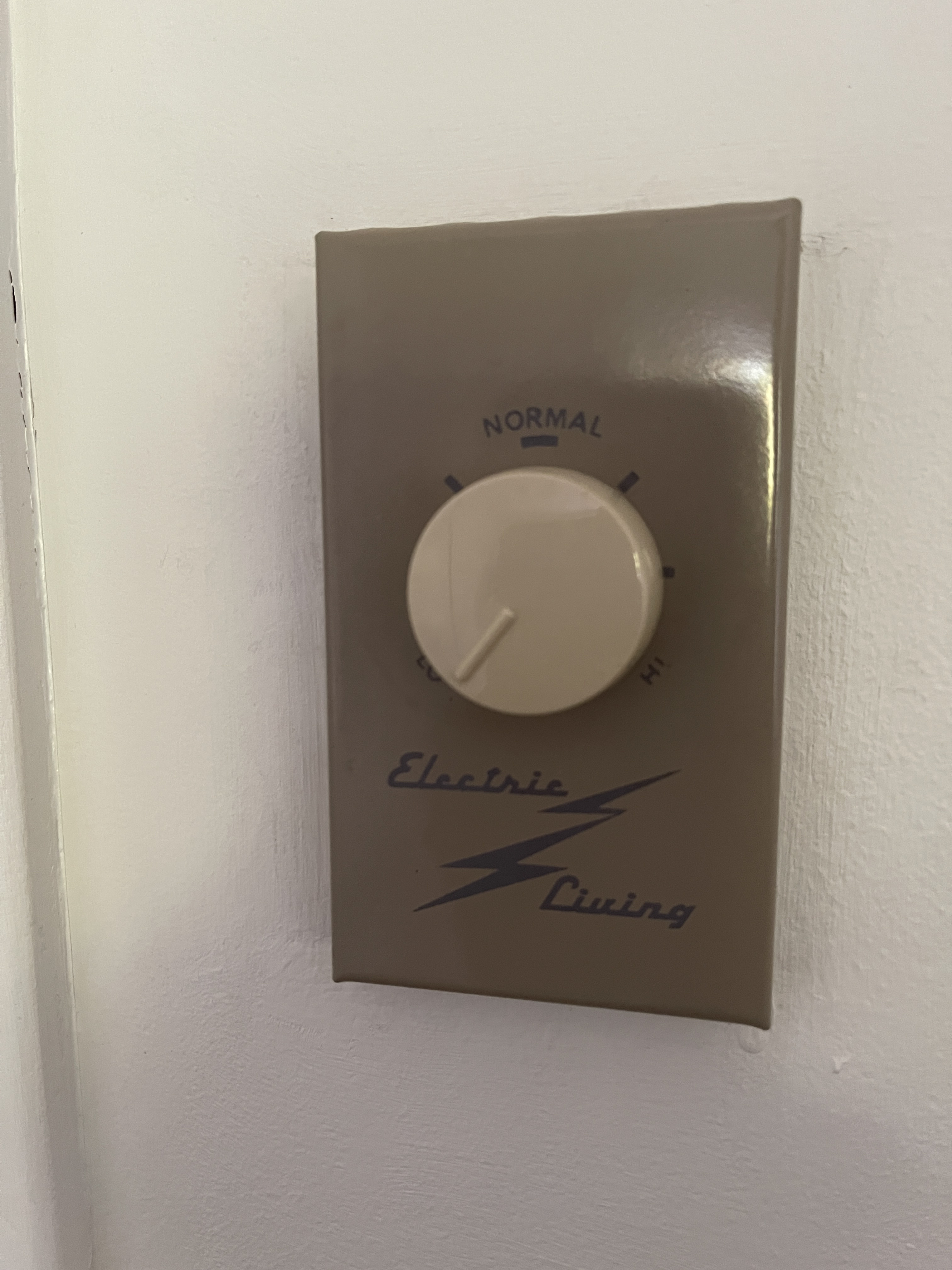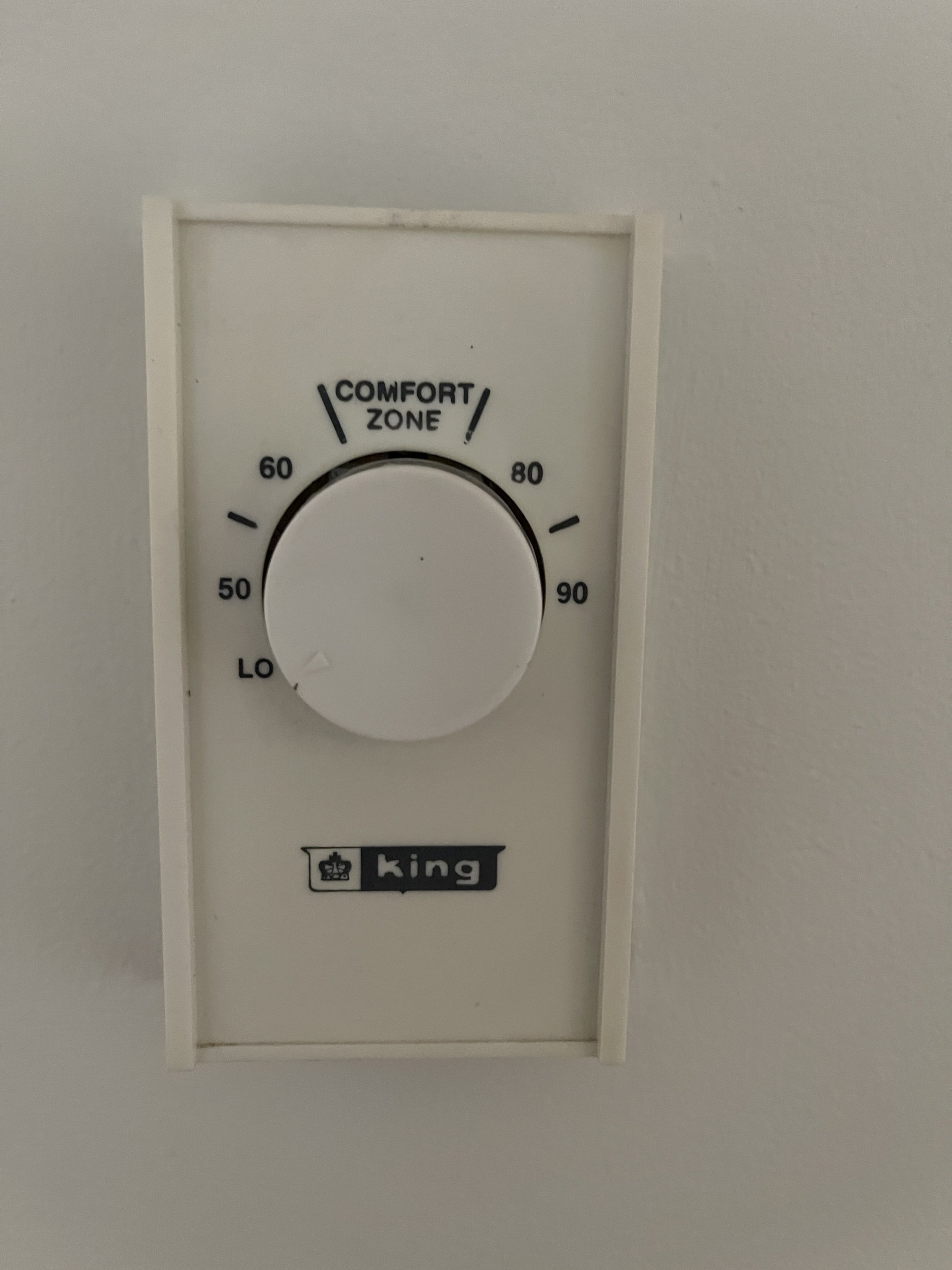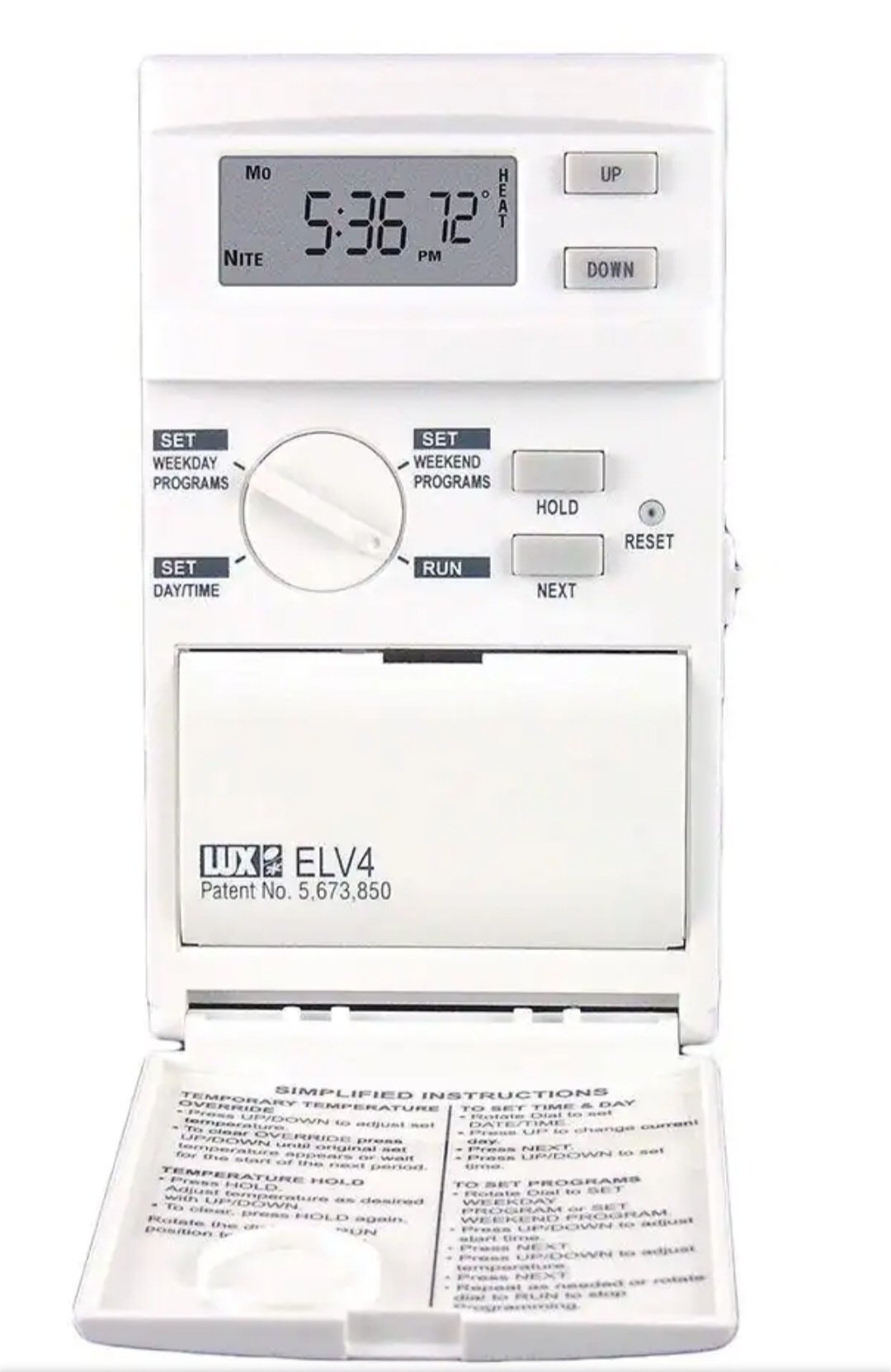Need advice on replacement for 1960s thermostat that controls radiant ceiling heat
Hi,
I'm looking for advice on a suitable thermostat to replace an old (circa 1967) thermostat that controls radiant ceiling heat in a bedroom. For context - the house has multiple thermostats that control ceiling heat in different areas of the house. The one I'm wanting to replace doesn't seem to turn off i.e. even when turned all the way down the ceiling still feels warm. The original thermostat has 'Electric Living' on the cover, though I'm not sure if that's the actual brand. In a couple of rooms it looks like the thermostats have already been updated with slightly more modern 'King' brand thermostats.
Based on review of existing posts on this site, I believe I'm looking for a line voltage thermostat. What I can't figure out is whether I need 120 V or 240 V. Unfortunately, the heating system doesn't appear to have it's own breaker on the electrical panel - it seems to be combined with the kitchen range for some reason. This makes me think that 240 V is what I'm looking for.
Please see attached photos of original Electric Living thermostat with and without the cover, plus a picture of one of the newer/replacement King thermostats. In the photo of the original thermostat without the cover, I did wonder if the small screw that is visible on the front of the unit (inside the circular cutout) maybe allowed recalibration of the thermostat but it doesn't want to turn in either direction, so I'm guessing replacement of the entire unit is the way to go.
Any advice would be greatly appreciated. Thanks!
Comments
-
This is a Honeywell electric heat thermostat.
Edward Young Retired
After you make that expensive repair and you still have the same problem, What will you check next?
0 -
It is probably 240 V. This can be verified with a volt meter or voltage tester connected between the red and black leads.
Current code in most areas requires that 240 V switches or thermostats be double pole, that is they must switch both leads because each is 120 V to ground. That way when the switch or thermostat is off, the heater should be safe to work on.
—
Bburd0 -
120 or 230 volt.
0
Categories
- All Categories
- 87.2K THE MAIN WALL
- 3.2K A-C, Heat Pumps & Refrigeration
- 60 Biomass
- 427 Carbon Monoxide Awareness
- 119 Chimneys & Flues
- 2.1K Domestic Hot Water
- 5.8K Gas Heating
- 115 Geothermal
- 165 Indoor-Air Quality
- 3.7K Oil Heating
- 75 Pipe Deterioration
- 1K Plumbing
- 6.4K Radiant Heating
- 394 Solar
- 15.6K Strictly Steam
- 3.4K Thermostats and Controls
- 56 Water Quality
- 51 Industry Classes
- 49 Job Opportunities
- 18 Recall Announcements






